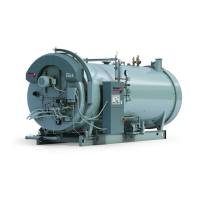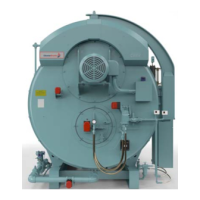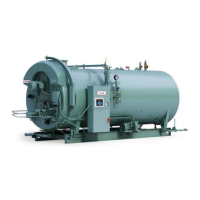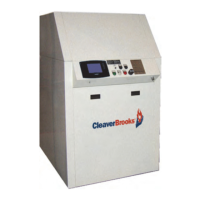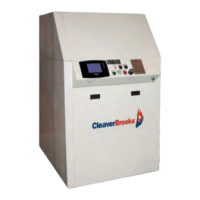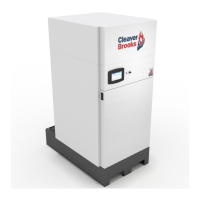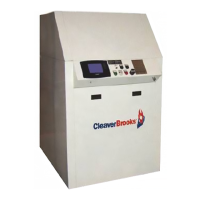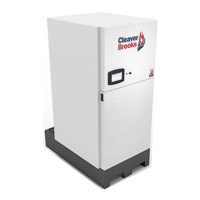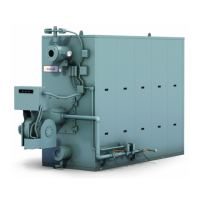750-382
CBT
5-3
Water column blowdown
It is generally recommended that bottom blowdown be performed at least once in every eight-hour period. Actual
frequency may vary depending on water conditions and boiler operating conditions. Consult the appropriate water
treatment personnel regarding blowdown scheduling.
5.3 — Water column blowdown
Free flow of water through the water column and gauge glass is essential to obtaining accurate boiler water level
indication and control. It is recommended that the water column and gauge glass be blown down every shift to
remove accumulated solids. Regular blowdown of the water column will help maintain the integrity of the water
level probes and will help to ensure trouble-free operation of the boiler. See Figure 5-2 for procedure.
Manual blowdown procedure
Blowdown is most effective when the boiler is under a light load, and when the water level is at the Normal Operating
Water Level.
Be sure the blowdown piping is in proper operating condition. Waste should be piped to a point of safe discharge. To blow
down the boiler:
1. Open the quick-opening valve (one closest to the boiler).
2. Open the slow-opening valve.
3. Blow down the boiler for the amount of time specified by your water treatment consultant by opening and
closing the slow-opening valve. A minimum of 10 seconds with the valve fully open is recommended.
4. Some boilers may require several short blowdown cycles to maintain the proper water level.
5. Close the slow-opening valve.
6. Close the quick-opening valve.
7. Open the slow-opening valve again to drain the line between the quick and slow-opening valves.
8. Close the slow-opening valve again and double check that the shutoff is tight after the valve has cooled.
• Never pump the quick-opening valve to blow down the boiler. Such action could cause water hammer and damage the
piping and valves. It could also cause personal injury.
• Never leave an open blowdown valve unattended.
• Remember the valve closest to the boiler must be opened first.
• Blowdown should be done at least once per shift. Depending on operations, more frequent blowdowns may be required.
!
Caution
